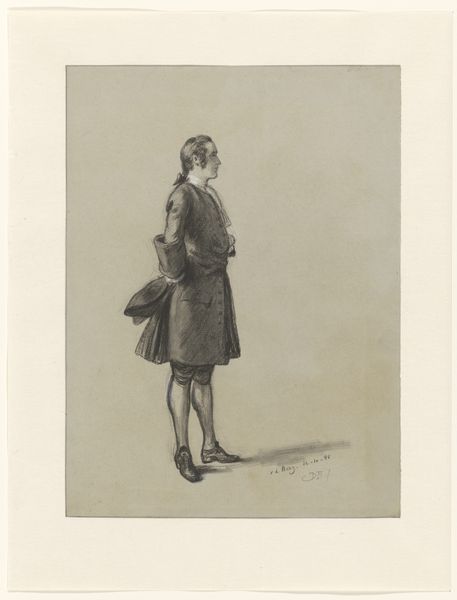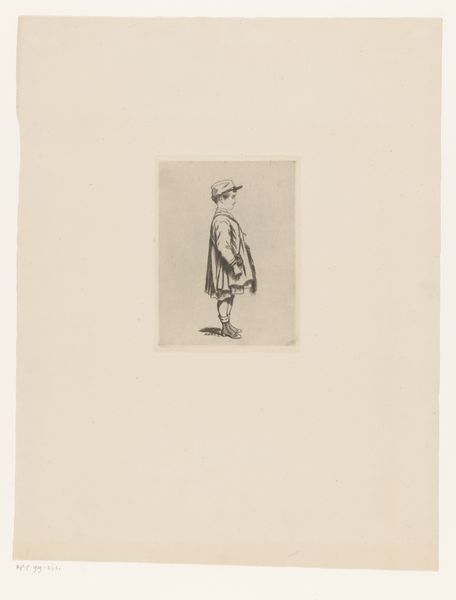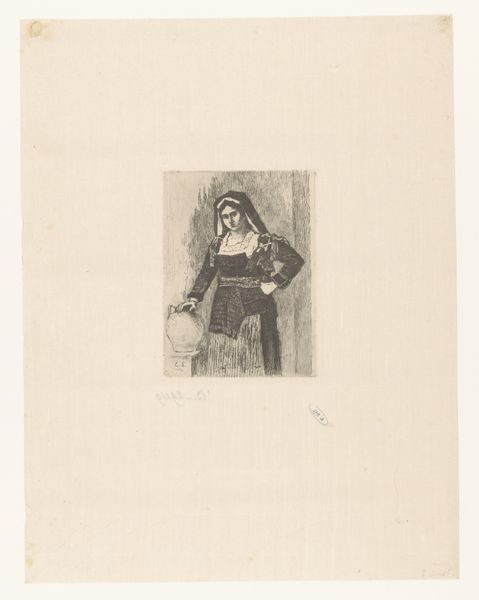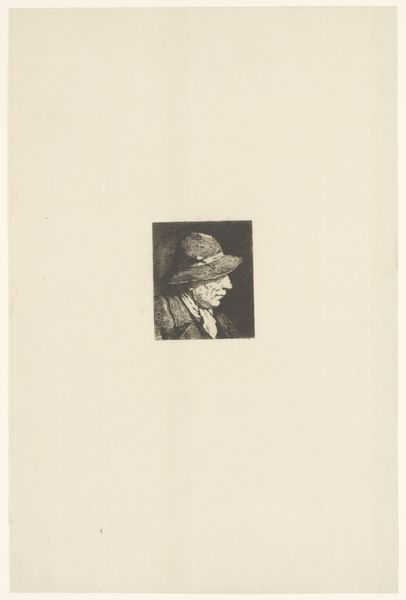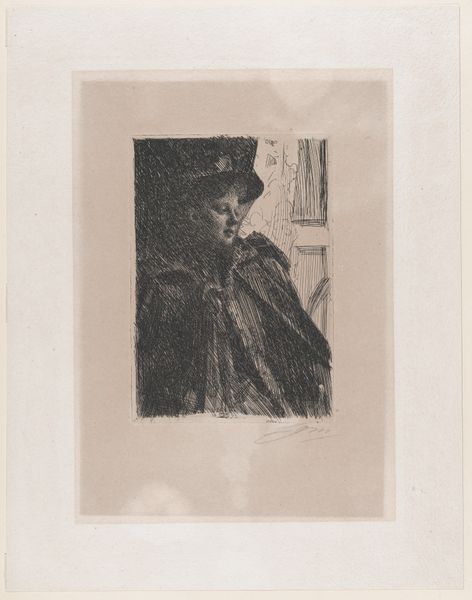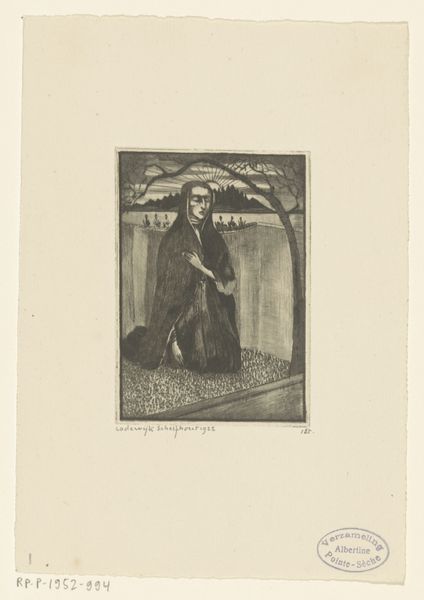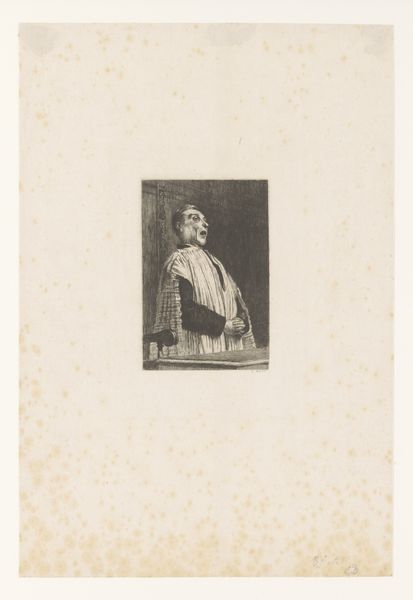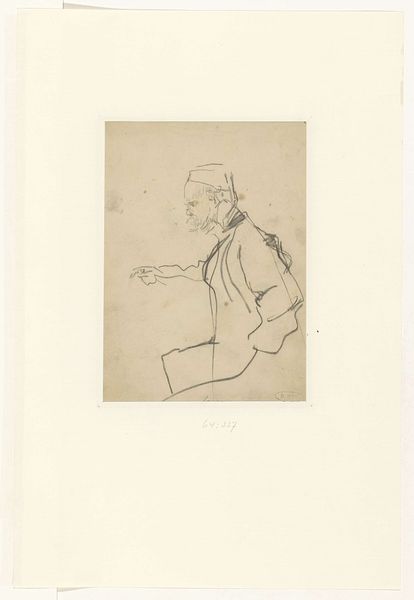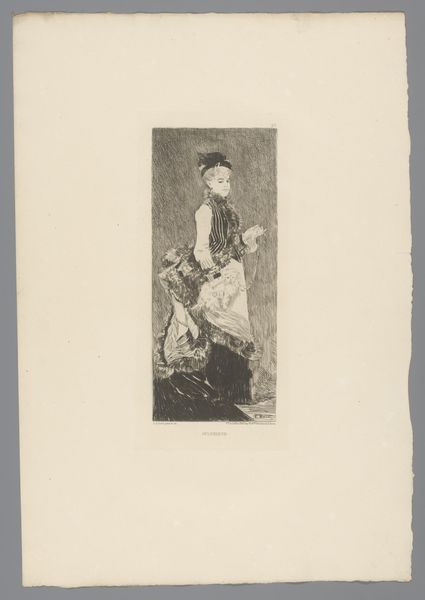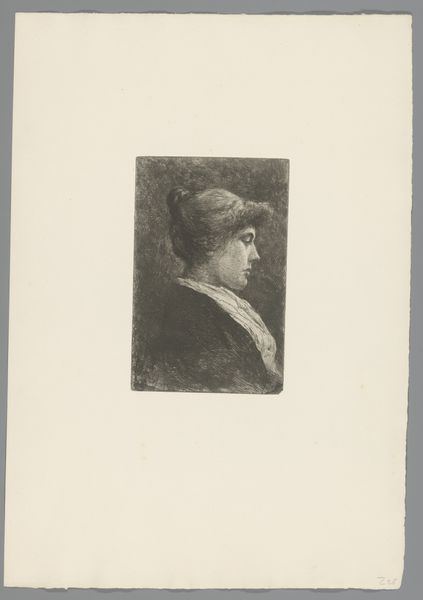
Dimensions: 167 × 80 mm (plate)
Copyright: Public Domain
Curator: Ah, "Man Standing in Church" by Antonio Piccinni, created in 1875. It's a rather understated piece. My immediate thought is… lonely. What strikes you? Editor: The mood definitely leans melancholic. The tight, almost claustrophobic composition centers this figure; it gives an air of social alienation in a sacred space. The church should be a space where communion triumphs over estrangement, yet... Curator: Yes! There’s a stillness about him that’s almost haunting, isn’t there? Perhaps lost in thought or contemplation? The soft gradations of light created by Piccinni really lend a quiet sense of intimacy, drawing us into his world for just a moment. It is remarkable how he uses line to create light and shadow. Editor: I wonder, who was the church for at the time? What did religious spaces promise, and to whom was the promise broken? The composition, with the church's imposing column dwarfing him, underscores a feeling of being crushed beneath a societal structure. Curator: The man does look like a tiny beetle near this huge stone wall. This is, indeed, the question: Who gets sanctuary? Also, did this piece capture an existential crisis or a Sunday ritual? It's a moment frozen in time, so we can only make suppositions about the intentions. Editor: Exactly. By depicting an individual facing an interior or spiritual struggle, the artist is making a potent statement on class, status, or faith. Even though Piccinni probably wouldn't go so far as calling for dismantling these kinds of social organizations. What I find really interesting is how Piccinni combines what you said—this deeply felt individual drama—with incisive observations about broader society. Curator: Well, whatever his initial intention, I think it captures that peculiar human experience: confronting ourselves and maybe a bit about the unknown in the familiar architecture that we have created. The ambiguity and sense of quiet intrigue really gets to me, and leaves me to think further. Editor: I agree completely. This work asks us not just to observe but to question, which is why I am fascinated by it.
Comments
No comments
Be the first to comment and join the conversation on the ultimate creative platform.
